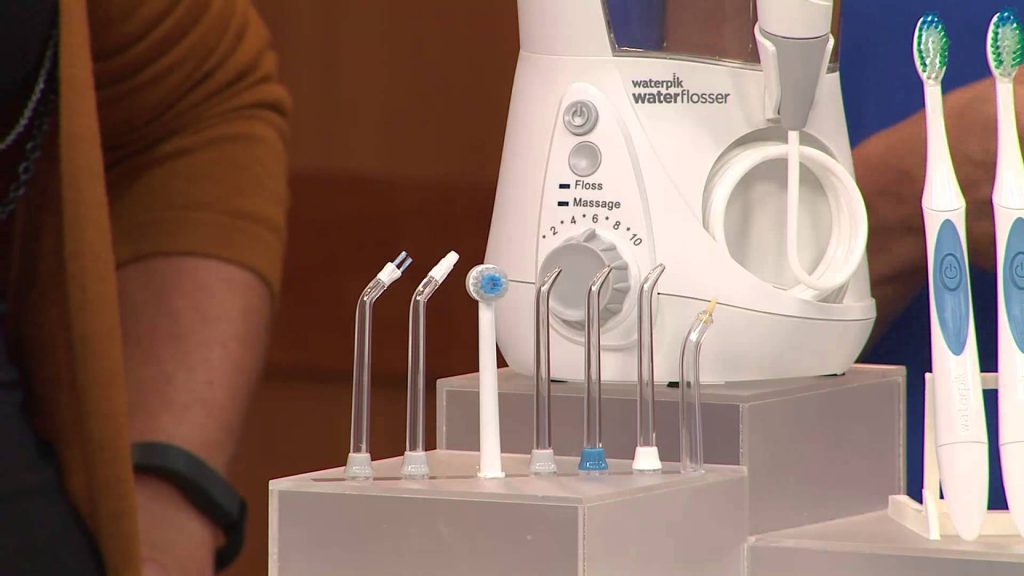
You have a choice of more than just dental floss to clean between your teeth. There are now hundreds of products on the market for interdental cleaning, ranging from wooden sticks to interdental brushes, and now even oral irrigation devices also known as water flossers (or Water Piks.)
Clinical studies of the Water Pik have found that the water flosser is 51% more effective for reducing gingivitis, twice as effective at reducing gingival bleeding, and 29% more effective at removing plaque. The Waterpik can give you healthier teeth and gums when being used for just a minute per day.
What is a Water Flosser or Water Pik?
A water flosser is an oral health appliance designed for dental care at home: consider it a ‘power washer’ for your gums.
Although sizes and features vary, all water flossers include:
- Motor with pump
- Water reservoir
- Special tips for specific cleaning needs
The motor and pump cause a stream of pressurized, pulsating water to flow from the reservoir through the tip and into the mouth.
The targeted stream of water removes plaque, food particles, and bacteria in a way that’s more effective, more comfortable, and easier than traditional string floss. The pulsating action also stimulates gum tissue for added health benefits.
Why Choose a Water Flosser?
If you don’t like string floss, don’t floss often, or find string floss hard to use, a water flosser can be the answer.
- Many people find water flossing easier and more pleasant than using string floss, and they may floss more often as a result.
- Gum disease prevention and treatment is another reason to use a water flosser. Waterpik®Water Flossers are clinically proven to reduce gingivitis, remove plaque, and improve gum health.
- Water flossers are especially useful for cleaning braces and other orthodontics, as well as cleaning bridges, crowns, and dental implants.
- Water flossers are helpful for people with dexterity issues, such as arthritis, who find string flossing difficult.
What About Toothbrushing?
For daily home care, we recommend:
- Brushing your teeth 2x a day for 2 minutes
- Flossing once a day to clean between your teeth
Although water flossing reaches areas that tooth brushing can’t, it is not a replacement for brushing your teeth. Rather, it is an alternative to string floss, interdental brushes, or floss threaders to remove plaque and debris that brushing leaves behind. There will also be some patients for whom we recommend using regular dental floss in addition to water flossing, but we like to see every patient using a Water Pik, if possible.
Is Water Flossing Messy?
Compared to string floss, water flossing is easier and doesn’t require you to put your hands in your mouth or deal with used string floss.
The correct technique is they key. Unlike string floss, you don’t need to look in the mirror or hold your mouth open wide.
To use a water flosser, place the flosser tip in your mouth, close your lips most of the way, and lean over the sink. Then turn the power on. As you floss along the gumline and between your teeth, allow the water to empty from your mouth into the sink.
Essential takeaway: flossing is designed to prevent bacterial changes that lead to gum disease. Gum disease has been linked to heart conditions, diabetes, and infection. If regular flossing isn’t getting the results you’re looking for, a water flosser might be the best option for you. Let’s talk about this during your next appointment.
